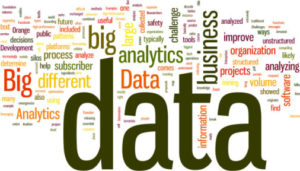
But, what’s the problem:
In the fast -paced world nowadays, the companies that can make quick decisions are more likely to succeed than others. Making a decision is no easy job. You need to frame your questions correctly, and then find right data to support for analysis in a transparent and repeatable manner. The decision-making becomes more complex as your business expands and enter new markets. As per a survey conducted by EY in 2012, 81% of the 285 senior executives from across the world who participated in the survey believed that they need to improve their decision making speed and level of insight to succeed. Most of the survey respondents found that their employees are spending too much time in making a decision based on the intuition and focusing on irrelevant details instead of correct data. They believed that the employees need to add more value to the decision-making process by using lead indicators, identifying the root cause of problems, and formulating a strategy around resource allocation, planning, and reporting. Most of the companies are ignoring the drive value and underestimating the level of efforts that is required to correlate the impact of most essential drivers in various Ares like products, market segment, channels, markets, business unit, etc. Consequently, if you want competent project management abilities in your company that can drive towards growth then, you need to have a system that implements driver analytics that can mathematically link business strategies with the market, competitors, operations and finances so that good decision-making policy can be implemented. If a fully developed project management system is implemented in a business then you can easily identify any changes in the drivers using data analytics that can affect your business. This helps in making quick decisions in this fast-paced world. It further assists the business in the identification of root cause of the problems in a “what if” module where you can easily assess the impact of the changed driver on various areas of business. Why do we need data analytics? Nowadays, data is everywhere and even the data collected by the businesses these days is enormous and beyond expectations. The latest trend is to store all data relating starting from the information of a lead, that visited your website to real-time consumers’ information, their location information based on the mobiles, huge social media data, and what not. This has led to the increase of more unstructured data. But, it is of no use to simply focusing on exposing, collection, storing, and sharing of data in this unstructured format until it is analyzed to derive some valuable insights for the business for decision-making. Even though the companies are investing heavily in the data management system in a quest to collect a larger amount of data but it has only helped them in reducing transaction costs and very less benefit is being seen in improving their decision-making capabilities. The decision makers in the companies are unable to utilize the analytical capabilities to the full extent to make the effective decisions.
How is data driven insights are changing the business?
Companies are realizing the fact that they need to use the insights from the data and use the data science as well. They are nowadays willing to spend anything to achieve this. The companies are going through this transition because they believe the insights from the data can help them following ways:- They can use the insights to drive efficiency and cost: The insights from the big data can be used to identify the opportunities for cost savings. You can use the insights to identify the potential operational efficiencies in the business to reduce cost. Many companies are using big data analytics to reduce their risks also. It helps in better risk governance, detection of fraud, and ensuring compliances. Also, adoption of big data further helps o reduction of IT cost due to modernization of the information management system. Most of the big data technologies are open-source and use commodity hardware that is almost 20 to 30 times cheaper than traditional data warehousing technologies;
- Using the insights for driving growth of the existing business streams: the insights from the big data are being used to introduce new offers and promotions in the market through better understanding of the consumer behaviour. It is helping in enhancing the effectiveness of the sales and marketing efforts of the companies. It allows you to develop a much clearer understanding of the customer by aggregating and analysing more relevant data regarding consumers. Using this power of deep consumer analytics and behavioural modelling allows the organizations to create more innovative and relevant service offering for the consumers based on their needs and it finally allows you to deliver an integrated and seamless digital customer experience;
- Using the insights to drive growth through new data streams: Big data has changed the traditional business boundaries. Now, the companies are using their increased knowledge about the consumer behaviours to develop new streams of revenue by introducing geo-located marketing efforts, servicing offers, etc. They are also using the analytics to enter new markets by introducing new products and services.
- Formulate a strategy: You can find data everywhere and it can provide great value to your organization. However, there is a big possibility that you might get lost in this huge pile of data. Consequently, you need to formulate a strategy that will help you in identifying the data that will make a difference to your business. So, instead of focusing on what data is available to you and what can be accessed by you, try working on the data that will help you achieve your business objectives;
- Identify key business areas: Then, you need to identify the key areas that will help you achieve your overall strategy which in turn will enable to achieve your business objectives, Usually, finance and operations are the key departments for any business;
- Identifying unanswered business questions: Now, that you have formulated a strategy. The next thing that you need to find answers for the questions that are essential to achieving your goals. This shall assist you in finding the exact data that you really need to find answers to your questions. This will help in reducing your data requirements, cost, and stress level drastically. Now, you will just need to collect only relevant data to answer your questions instead of recording all data;
- Finding data relevant to your questions: In this step, you should identify the data that is actually required to find answers to your questions. you need to stress on finding the ideal data that can help you answer your tenacious questions as well as allow you to achieve your strategic objectives. Make a note of the data sets that can be used to find answers and then you can choose the best data sets from among them based on the cost, effectiveness, and ease of availability of data;
- Identifying the data you already own: It is quite possible that you already have access to the data you need, it may be possible it is already sitting on your internal servers. But, in case you do not already have access to data, try acquiring them from external sources or try finding other ways to collect data;
- Estimating the cost and efforts:It is quite important that the tangible benefits of the data should outweigh the cost and efforts required to collect the data. Data should be tread as a business investment that will create long-term value for the business. The cost of data is usually falling all the time, but can add up if you do not have a proper data management system in place. Hence, it becomes important on focusing on data that you really need and if the cost of data starts outweighing its benefits that you should think about finding alternatives;
- Collecting the data: This step majorly revolves around setting up a process wherein the reasonability of collecting and managing of data can be delegated. You can also think about buying an access to an analysis-ready data interface but still, there will be some efforts required on your part for data collection;
- Analyzing the data: It is the most important step of the whole process. The data has no value until and unless it is analyzed to retrieve essential and meaningful business insights out of it. Every data has something new to teach and you need to extract that lesson from it. The most commonly extractors used are text analytics, speech analytics, and video or image analytics. There has been a drastic increase in the number of platforms that provide for big data analysis recently. Some platforms require nothing more than excel skills which can be analysed by an employee whereas some of them require more experienced and analytical skills to analyze the data;
- Distributing the insights: It is very important the insights drawn from the data reaches the right person at a right time so that it can be utilized for the purpose of decision making. It is also essential that the insights are presented in a meaningful so that they can add some value and ultimately increase the performance. There are many valuable tools that helps your present data in many interesting ways;
- Utilizing the insights: At last, you need to utilize the insights from data for applying them in the decision-making process. It will help in making decisions that will help you in achieving business objectives and transforming your business. Nevertheless, turning data into action is most important.
Conclusion:
Now, it is clear that why data is so critical to the business. With so many things happening around the world at the same time, it has become essential to have a better and faster view of the things happening around. The data should be the foundation of every decision you take. But, the real challenge lies in the fact that you need to find data that can create the most relevant and genuine insights that can be used for effective decision-making that can take your business to new heights. You can find data everywhere but you need ultimately that data that can be provide you more value to your traditional product and services. Big data is one such technology that can help you achieving this new business model. It can enhance your capability to compete new entrants in your industry as well allow you to enter new industries yourself and create new revenue streams. With the technology, you need a unified organization-wide strategy as well that includes everyone. The organizations realizing the value of data are combining the digital technology with the transformational management to succeed. Hence, the utilizing big data for your favour is all about organizational integration, change, and evolution by using the technology.

